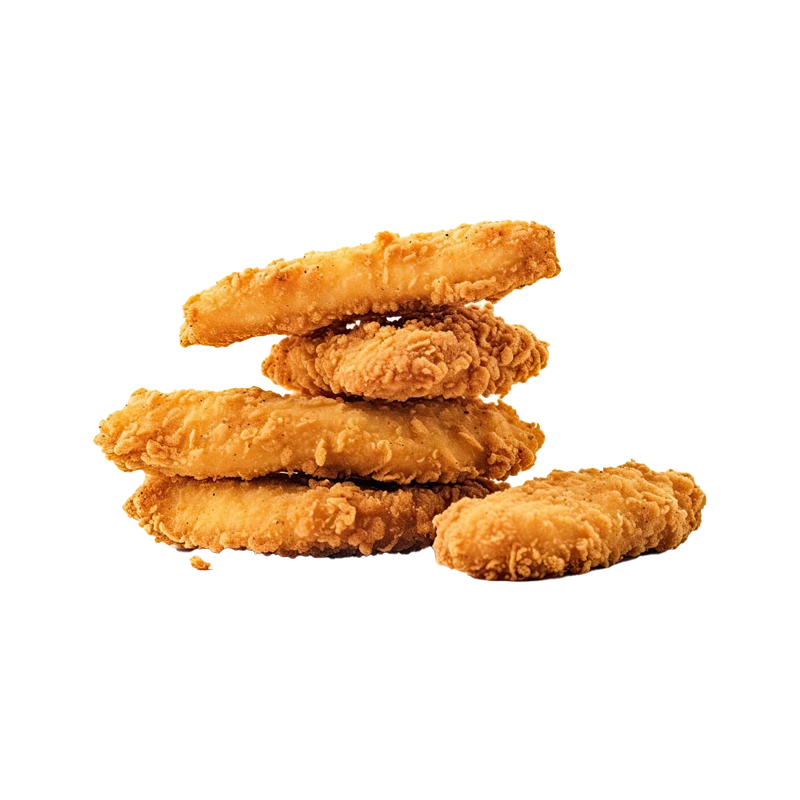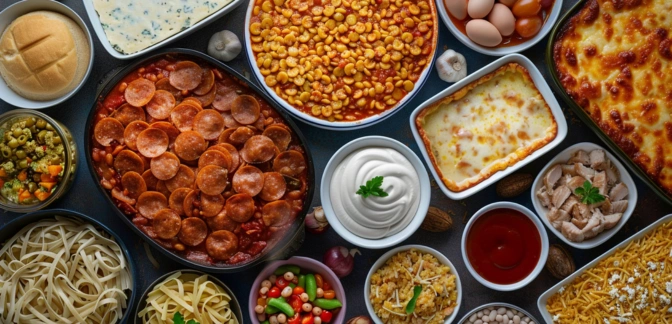Chicken Tenders — Nutrients, Health Benefits, And Shopping Tips

Written by Listonic Team
Last update on September 4, 2024
Chicken tenders nutrients
Nutrition facts
Amount per 100 g
Calories
🔥 263 kcal
| Nutrition per: 100 g | Value | % Daily Value* |
|---|---|---|
| Carbs | 8 g | 2.91% |
| Fiber | 0 g | - |
| Sugars | 0 g | - |
| Glycemic Index | 0 | - |
| Protein | 24 g | 48% |
| Sodium | 634 mg | 27.57% |
| Total Fat | 15 g | 19.23% |
*The % of Daily Value (DV) tells you how much a nutrient in a serving of food contributes to a daily diet. 2,000 calories a day is used for general nutrition advice.
24 g
💪 High Protein Content
Chicken tenders facts & tips
Health benefits
- High in protein, essential for muscle growth, repair, and overall body function.
- Versatile and easy to prepare, making them a convenient addition to a balanced diet.
- Can be low in fat if baked or grilled, making them a healthy option for weight management.
- Provides essential vitamins and minerals such as Vitamin B6, B12, and selenium, supporting overall health and well-being.
Health risks
- High fat content particularly in fried chicken tenders, which can raise cholesterol levels and increase the risk of heart disease when consumed frequently.
- High sodium content in many commercial chicken tenders, which can contribute to hypertension and increased cardiovascular risks.
- High calorie content which can contribute to weight gain if consumed frequently or in large portions, particularly when fried or served with high-calorie sauces.
- Risk of contamination with harmful bacteria such as Salmonella or Campylobacter, particularly if the chicken tenders are not properly cooked or stored.
How to choose chicken tenders
Chicken tenders should be golden and crispy on the outside, with tender, juicy white meat inside. The breading should adhere well to the meat and enhance its flavor without overpowering it.
Avoid chicken tenders that are soggy or have a greasy feel, as these are likely not cooked correctly. Tenders that have an off smell or are overly tough should also be avoided, as they may not provide an enjoyable eating experience.

How to store chicken tenders
Fresh chicken tenders should be stored in the refrigerator, tightly wrapped in plastic wrap or butcher paper. Refrigeration maintains their freshness for up to two days. Freezing is recommended for longer storage.
Air exposure can cause chicken tenders to spoil quickly. Avoid leaving them uncovered, and always thaw frozen tenders in the refrigerator to prevent bacterial growth. Proper storage ensures they remain safe and delicious.
✅ Extra Tip
How long do they last?
Chicken tenders can last for 1-2 days in the refrigerator once cooked. For longer storage, chicken tenders can be frozen for up to 6 months. Ensure they are stored in an airtight container to maintain their quality.
What to do with leftovers?
Leftover chicken tenders can be used in a variety of savory and kid-friendly dishes. Slice them and add to salads, wraps, or sandwiches for a quick and easy protein, or chop them up and mix into a pasta dish with your favorite sauce. Chicken tenders are also great when added to a casserole with cheese, vegetables, and breadcrumbs for added texture.
Use chicken tenders as a topping for pizzas or flatbreads, where their crispy exterior adds a delicious contrast to the other toppings. If you have a lot of chicken tenders, consider making a batch of chicken tender sliders with your favorite toppings and sauces, or using them as a filling for tacos, burritos, or quesadillas. Chicken tenders can also be served over a grain bowl with quinoa, roasted vegetables, and a tangy dressing. For a quick snack, reheat chicken tenders and serve with a dipping sauce like honey mustard, barbecue sauce, or ranch.
👨⚕️️ Medical disclaimer
Discover products from other categories
Listonic Team
Fact-checked
Our editorial team checked this article to make sure it was accurate at the time of publishing it.
Get the top-rated shopping list app on your phone!







